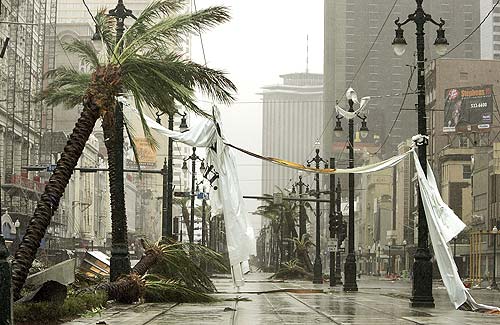Audrey2Katrina wrote:senorpepr wrote:Audrey2Katrina wrote:I appreciate your trying to clarify the issue; but then just tell me: Do you feel the 84 KT "sustained" referred to in the NHC report was, in fact, "sustained" winds at that magnitude? Because this is the same facility that reported the 107 KT winds at another guage using exactly the same terminology. Not trying to be contentious--just wish to clarify it.
A2K
The 84KT would be what we normally refer to as a sustained wind. (Although maybe 1 or 2 knots less when adjusting for proper height.) The question is... is the other gauge at the same height? If so... why wasn't it included into the report? Something was some different with it that it was completely thrown out. If I could see an actual reference, then I could further clarify.
I will try to get the actual NWS site for you, and appreciate your efforts.
A2K
Okay... here's the scoop from what I gathered. (I made a couple of phone calls which occasionally helps, because I'm getting rather braindead with a lack of sleep.

) I'll try to explain this the best I can.
First, recaping what I mentioned earlier... the one-minute is the scale/unit of measurement. That one-minute average can take place over a second or a year, whatever. What matters is that wind occurs for 2 minutes or longer. 100KT for a minute and then 90KT for the next minute and then 100KT for the next minute will only yield a sustained wind of 90KT. (Because the 100KT didn't last for 2 consecutive minutes.)
Okay... with that said... the 84KT from gauge one was an actual report sent from the processor. That is 84KT sustained (one-minute average) for at least two full minutes.
The 107KT from gauge two was a visual observation of the readout. Basically, someone by the machine looked at the instant readout and it said 107KT. Now... how long was 107KT displayed?? We don't know. It needed to be displayed for two-minutes for it to be a sustained wind rather than a gust.
Now... I believe the 107KT is a gust because... had it been 107KT for two-minutes, the gauge would have recorded that measurement. (or at least I would assume so. I wasn't there, so I can only guess.) Instead, we're relying on someone's visuals. Secondly, if the NHC had reason to believe the wind was 107KT for at least two-minutes, it would have been included into the NHC report, even as an unofficial report like the 84KT report was. Thirdly, KLIX NWS report says peak wind. 84KT and 107KT for gauges one and two, respectively, were the peak. The 84KT happened to be a peak-sustained, while 107KT was apparently just a peak with a lower sustained reading. (example: 80G107KT)
That's my two cents.










